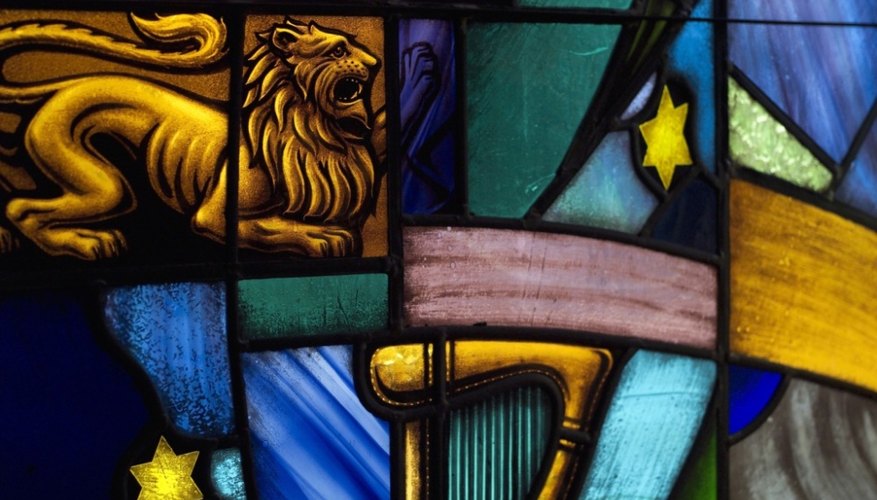Churches and synagogues have many similarities. Most importantly, both types of building are places of religious worship. However, the historical and cultural traditions of Christianity and Judaism mean that both churches and synagogues have developed certain distinct architectural features. There are similarities and differences not only in the way churches and synagogues are built, but also the ways in which they are used.
Synagogues
Although synagogues can vary greatly, there are a few features which are typically consistent. In most synagogues, the seating area will be divided between men and women. One end of the main room -- the end which faces toward Jerusalem, where possible -- will contain the Ark, a cabinet used to hold the Torah scrolls. A light is kept burning above the Ark. The Torah is central to worship in Judaism; passages from the Torah will be read from a special reading desk called a bimah. A plaque listing the ten commandments is usually on one wall.
- Although synagogues can vary greatly, there are a few features which are typically consistent.
- One end of the main room -- the end which faces toward Jerusalem, where possible -- will contain the Ark, a cabinet used to hold the Torah scrolls.
Churches
The wide variety of Christian sects means that churches are every bit as varied as their congregations. The simplest churches are rectangular buildings with rows of seats. More elaborate churches typically have a main area, called a nave, with an aisle on either side. Projecting wings or chapel may give the building a cross shape. One end of the building houses an altar; this end of the building may have a semicircular projection called an apse. In Orthodox churches, this end -- the 'high' end -- of the church may be divided off by a screen called an iconostasis. In Western Europe, churches often have towers, while the Eastern tradition emphasises domes. However, the history of church architecture is so varied that it is difficult to establish any firm rules.
- The wide variety of Christian sects means that churches are every bit as varied as their congregations.
- In Orthodox churches, this end -- the 'high' end -- of the church may be divided off by a screen called an iconostasis.
Similarities
Synagogues and churches have some fundamental similarities. Most notably, they both consist mainly of a large seating area oriented toward one end of the building. In Catholic churches, a small enclosure called a tabernacle holds the bread and wine used in communion; this can appear similar to the Ark. Additionally, most churches have a lectern or pulpit from which sermons are delivered; this may appear similar to the bimah, and is often in a similar location.
- Synagogues and churches have some fundamental similarities.
- In Catholic churches, a small enclosure called a tabernacle holds the bread and wine used in communion; this can appear similar to the Ark.
- Additionally, most churches have a lectern or pulpit from which sermons are delivered; this may appear similar to the bimah, and is often in a similar location.
Differences
One important difference between churches and synagogues relates to art. While many churches display images of Christ, saints or other religious figures, this is uncommon in synagogues. Many Jewish thinkers believe that the second commandment prohibits such art in a religious context, although there is some debate on this subject. Synagogues are also organised differently from churches: while most churches are open to any believer, synagogues are membership-based. Jewish families join a synagogue, paying dues to support it, and typically don't attend more than one.
- One important difference between churches and synagogues relates to art.
- Synagogues are also organised differently from churches: while most churches are open to any believer, synagogues are membership-based.
